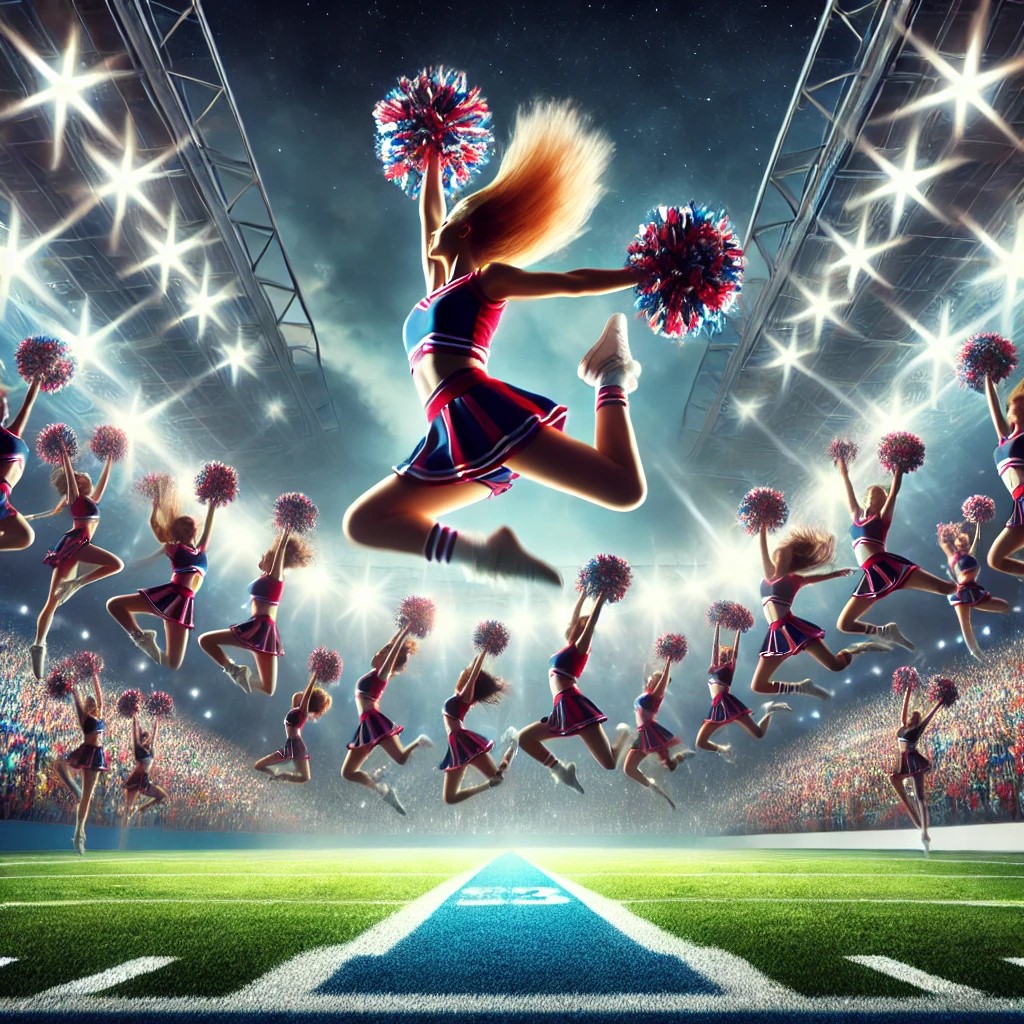
The Dynamic World of Cheerleading: A Comprehensive Overview
Cheerleading is a vibrant and energetic sport that combines elements of gymnastics, dance, and acrobatics to support teams and entertain audiences. It is more than just sideline entertainment; it is a global phenomenon with a rich history, a growing international following, and a structured competitive framework. In this blog, we will delve into the origins of cheerleading, its worldwide popularity, its impact on youth and schools, professional leagues, social and political significance, and the rules that govern it.
The Origin and History of Cheerleading
The origins of cheerleading date back to the late 19th century in the United States. In 1898, Johnny Campbell, a medical student at the University of Minnesota, is credited with organizing the first official cheer. He led a chant to rally spectators and encourage the university’s football team. This act marked the beginning of an organized effort to inspire sports teams and engage fans.
Initially, it was a male-dominated activity. Early cheerleaders were responsible for leading chants and encouraging crowd participation. By the 1920s, women began to join the ranks, particularly during World War I and World War II, when men were serving in the military. This transition shifted the dynamics of the sport and led to the inclusion of gymnastic and dance elements, paving the way for modern cheerleading.
In the 1980s and 1990s, competitive cheerleading gained momentum. Organizations like the Universal Cheerleaders Association (UCA) and the National Cheerleaders Association (NCA) began hosting national championships. These events showcased athleticism and creativity, elevating it to a competitive sport recognized for its rigor and skill.
The Global Popularity of Cheerleading
It has transcended its American roots to become a global phenomenon. It is now practiced in over 100 countries, including Canada, Japan, Australia, and the United Kingdom. Organizations like the International Cheer Union (ICU) and the World Cheerleading Association have played pivotal roles in promoting the sport worldwide.
In countries like Japan and South Korea, it is intertwined with cultural performances. Teams often integrate traditional elements into their routines, creating a unique fusion of cheer and local culture. In Europe, it is gaining traction, particularly in nations like Germany and Sweden, where competitive leagues have emerged.
The sport’s popularity is also evident in international competitions. Events like the Cheerleading World Championships draw participants from diverse countries. These events celebrate the sport’s global appeal and provide a platform for athletes to showcase their skills.
Amateur Cheerleading: Youth and Schools
Youth and school-level cheerleading are the foundation of the sport. Many children begin their cheer journey in elementary or middle school, where they learn basic skills and routines. Youth leagues often emphasize teamwork, discipline, and physical fitness, fostering personal development alongside athletic growth.
In high schools, it is a prominent activity. Teams support school sports, such as football and basketball, through game-day performances. Additionally, competitive cheerleading has become a significant aspect of high school athletics. Competitions like the National High School Cheerleading Championship (NHSCC) provide opportunities for teams to demonstrate their abilities on a national stage.
Collegiate cheerleading is another critical segment of amateur cheerleading. College teams often perform at sports events and compete at national and international levels. Prestigious competitions like the UCA College Cheerleading Championship highlight the sport’s competitive nature. College cheerleaders also serve as role models for younger athletes, inspiring future generations to pursue the sport.
Professional Leagues and Cheerleading Organizations
Professional cheerleading extends the sport’s appeal beyond schools and youth leagues. Teams associated with professional sports leagues, such as the NFL and NBA, showcase high-energy routines during games. These teams, including the Dallas Cowboys Cheerleaders and Miami Heat Dancers, are celebrated for their talent and showmanship.
Globally, professional cheerleading teams exist in various forms. In Japan, the X-League—a professional American football league—features cheerleaders who perform during games. Similarly, countries like Australia and the United Kingdom have professional teams that entertain at sporting events and corporate functions.
Organizations like the ICU and the NCA play vital roles in governing the sport. The ICU, recognized by the International Olympic Committee, organizes world championships and promotes cheerleading as a legitimate sport. These bodies ensure consistency in rules and provide platforms for athletes to compete and grow.
The Social and Political Significance of Cheerleading
It holds significant social and political value. It fosters community spirit and unity, bringing together people from diverse backgrounds to support a common cause. In schools, it promotes inclusivity and collaboration, encouraging students to work together regardless of their differences.
The sport also serves as a platform for empowerment. Cheerleading empowers athletes, particularly young women, by emphasizing strength, confidence, and leadership. It challenges gender stereotypes and showcases female athleticism in a positive light.
Politically, it has been a symbol of patriotism and national pride. During times of war and crisis, cheerleaders have played roles in boosting morale and promoting unity. In modern contexts, cheerleading teams often participate in charitable events and community outreach, further cementing their role as ambassadors of goodwill.
The Rules of Cheerleading
It is governed by a set of rules designed to ensure safety and fairness. These rules vary depending on the type of cheerleading—sideline or competitive. Organizations like the ICU and the NCA establish guidelines that govern routines, formations, and safety protocols.
In competitive cheerleading, teams are judged on various criteria, including stunts, tumbling, dance, and overall performance. Judges assess the difficulty, execution, and creativity of routines. Teams must adhere to time limits, typically two and a half minutes, and avoid prohibited moves such as certain basket tosses and pyramids.
Safety is a primary concern in cheerleading. Spotters are required for complex stunts to prevent injuries. Athletes must undergo rigorous training to perform advanced maneuvers safely. Additionally, rules mandate proper attire and footwear to minimize risks.
Conclusion
Cheerleading is a multifaceted sport with a rich history and a global presence. From its origins as a simple chant to its status as a competitive and professional discipline, it continues to evolve and inspire. It plays a crucial role in schools, professional leagues, and communities, promoting teamwork, empowerment, and unity.
As it grows, its influence on social and cultural landscapes will undoubtedly expand. The sport’s ability to bring people together and celebrate athleticism ensures its enduring popularity and significance. Cheerleading, indeed, is more than a sport—it is a celebration of spirit, skill, and community.




